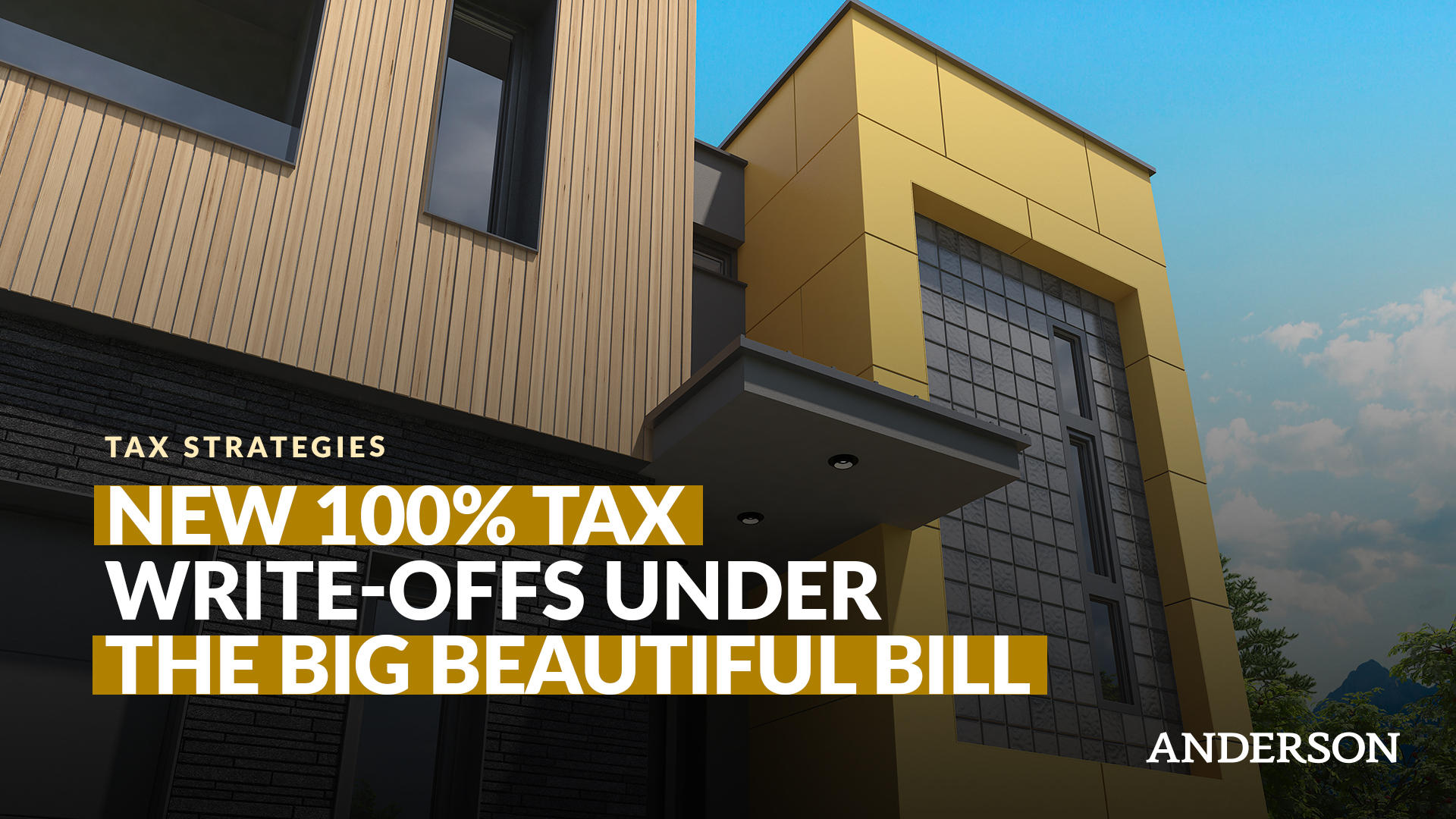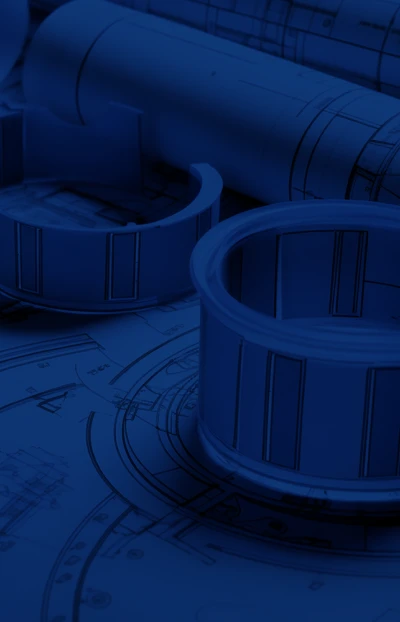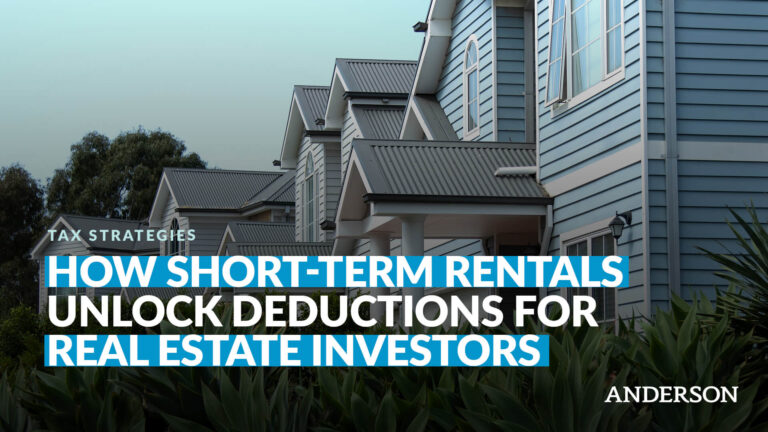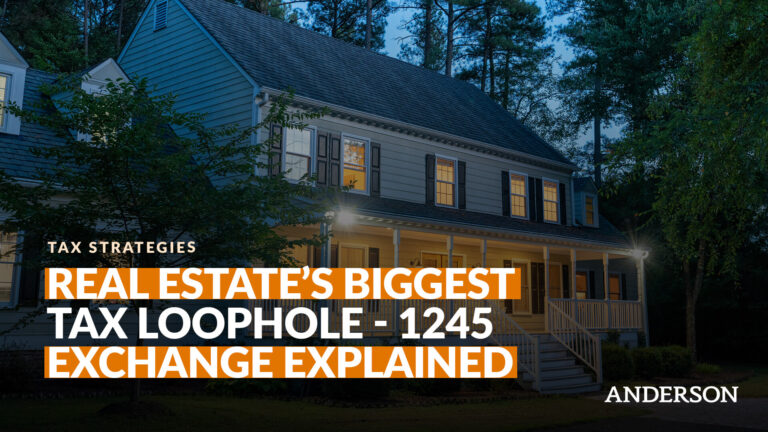
If you’re a small business owner or real estate investor in the United States, the One Big Beautiful Bill Act, passed by Congress on July 4, 2025, just delivered something worth celebrating. 100% bonus depreciation is back, and it’s now permanent.
Even better, there’s a new 100% deduction for production buildings, plus expanded tax benefits for business property improvements, vehicles, and equipment. Together, these changes in the tax bill and tax laws can help you legally deduct 100% of major purchases this year.
So, if you’re wondering how to claim 100% write-offs under the Big Beautiful Tax Bill, or what expenses are 100% tax-deductible, this guide breaks it all down.
Before we dive in, you can watch the full walkthrough here for real examples and strategy tips.
And if you’d like to customize your tax plan to your business, book a free 45-minute Strategy Session with one of our tax professionals at Anderson Advisors. We’ll review your return, map your deductions, and show you how to legally reduce your federal income taxes before your next tax bill.
What Changed Under the Big Beautiful Bill?
Trump’s Big Beautiful Tax Bill restored and enhanced several powerful provisions for small business tax deductions and real estate investor tax strategies.
The biggest update? The Big Beautiful Bill permanently extends 100% bonus depreciation to most property acquired after January 19, 2025, with a recovery period of 20 years or less.
When you buy business property—such as equipment, vehicles, or certain leasehold improvements—you can immediately deduct 100% of the cost in the year you place it in service.
You can finance the purchase or put it on a credit card and still deduct the full amount, as long as you use it for business purposes.
Qualifying assets include:
- Machinery, tools, and equipment
- Office furniture and computers
- Off-the-shelf software
- 15-year land improvements like paving, fencing, site lighting, irrigation, and sidewalks
- Qualified Improvement Property (QIP)—interior improvements to nonresidential buildings
Excluded: land, building structure, and inventory.
For context, this bonus depreciation rule is part of the federal tax code under Section 168(k)—and it’s a major win for both small business owners and investors.
Request a free consultation with an Anderson Advisor
At Anderson Business Advisors, we’ve helped thousands of real estate investors avoid costly mistakes and navigate the complexities of asset protection, estate planning, and tax planning. In a free 45-minute consultation, our experts will provide personalized guidance to help you protect your assets, minimize risks, and maximize your financial benefits. ($750 Value)
How to Claim 100% Write-Offs Under the Big Beautiful Bill— Here’s What Actually Qualifies
If you’re wondering exactly how to claim 100% write-offs under the Big Beautiful Bill and which expenses qualify, here’s what the tax code allows in 2025 and beyond:
- Equipment and machinery used for business purposes
- Furniture, fixtures, and off-the-shelf software
- Vehicles with a gross weight of over 6,000 pounds
- Qualified property improvements and build-outs
- Certain production buildings (new under the Big Beautiful Bill)
To deduct 100%, ensure you place the item in service by installing it, getting it working, and having it ready for use before the end of the year.
Do You Need a Cost Segregation Study?
Here’s the rule of thumb:
- If you’re spending new money on upgrades or improvements—such as paving, lighting, or irrigation—you already have the cost from invoices. That means you can deduct it directly without a cost segregation study.
- However, if you purchase a property, a cost segregation study helps distinguish between short-life assets (5-, 7-, or 15-year components) and the 27.5- or 39-year structure, thereby unlocking faster depreciation deductions.
This is one of the most underused real estate investor tax strategies. It’s also where many investors discover that they can deduct 50% or even 100% of their property costs upfront, saving hundreds of thousands of dollars in taxes.
Section 179 vs. Bonus Depreciation: What’s the Difference and When to Use Each
Think of Section 179 as a scalpel and bonus depreciation as a sledgehammer. Both are powerful tools for creating small-business tax deductions, but they work in different ways.
- Section 179 allows you to select specific assets, such as HVAC systems, roofs, or security upgrades, and deduct them immediately (up to $2.5 million, with phaseouts at $4 million). Section 179 is ideal for precision planning and smaller purchases, but it can’t create a loss.
- Bonus depreciation (Section 168(k)) applies automatically by asset class (5-, 7-, or 15-year property) and can create a loss. Bonus Depreciation is best utilized for major capital expenditures and broad categories, such as machinery, furniture, or vehicles.
When to use each:
| Use Bonus Depreciation When … | Use Section 179 When … |
| You want to offset a large gain or generate a loss. | You’re targeting specific business property, such as HVAC or roofing. |
| The asset has a recovery period of 20 years or less. | Your state doesn’t conform to federal bonus rules. |
| You’re looking for immediate deductions for the current year. | You want more control over timing or income-limit restrictions. |
You can layer both methods for maximum impact, especially when you coordinate them with charitable contributions, state and local tax (SALT) planning, and adjustments to your modified adjusted gross income (MAGI).
Timing matters: assets placed in service by December 31 of your tax year (e.g., December 31, 2025, for calendar filers) qualify for current-year deductions.
Can Real Estate Investors Take 100% Deductions Too?
Absolutely. Real estate investors can take advantage of these rules in multiple ways.
If you’re improving your property with new site work—curbs, fencing, lighting, irrigation, or retaining walls—you can classify those as 15-year land improvements and immediately apply 100% bonus depreciation.
If you buy a new rental property, a cost segregation study can reclassify 25–35% of the structure into 5-, 7-, and 15-year property. That portion is eligible for bonus depreciation.
Example: You buy a $1 million duplex, and $800,000 is depreciable (after subtracting land value). If 30% qualifies for bonus depreciation, you can deduct $240,000 in year one—and still depreciate the rest over time.
For investors filing as real estate professionals, this can also offset active income.
What’s the New 100% Deduction for Production Buildings?
One of the most exciting new small business tax write-offs under the new tax bill is the 100% deduction for certain production buildings.
Suppose you operate in manufacturing, refining, or processing and build or substantially renovate a facility for qualified production activities. In that case, you can now deduct 100% of the cost in the year you place it in service.
Here’s what you need to know:
- It must be a nonresidential building used primarily for production or manufacturing.
- You must begin construction (or acquisition, in some cases) after January 19, 2025, and before January 1, 2029, and place the property in service before January 1, 2031. You must also elect to treat it as qualified production property.
- The deduction applies only to owner-users—not leased properties.
- You must keep it in qualified use for 10 years or face recapture.
- Offices, retail areas, and parking don’t qualify.
This can mean millions in tax benefits for businesses expanding their facilities under the new tax laws.
How Do Vehicle Deductions Work?
Vehicles remain one of the most misunderstood deductions.
- Passenger cars weighing under 6,000 pounds face “luxury auto caps,” which limit first-year deductions, even with bonus depreciation.
- Heavy vehicles (over 6,000 lbs and used more than 50% for business) are eligible for 100% bonus depreciation up to the business-use percentage.
If you use your vehicle 60% for business, you can deduct 60% of the purchase price. However, remember to document your mileage and business use.
For mixed-use vehicles, the mileage reimbursement method (currently $0.70 per mile) is often safer and cleaner—especially for small business owners switching between work and personal driving.
What Tax Traps Should You Avoid?
Even savvy investors miss these:
- Forgetting that assets must be placed in service by year-end.
- Dropping below 50% business use (which triggers recapture).
- Ignoring state and local tax (SALT) adjustments if your state doesn’t follow federal bonus rules.
- Misclassifying structural improvements as eligible QIP.
- Failing to coordinate deductions with charitable contributions or itemized deductions which can impact your modified adjusted gross income thresholds.
How Can You Use These Rules Strategically?
The key is coordination—between your entity structure, your timing, and your overall income. That’s why this isn’t just about deductions—it’s about long-term tax planning.
Quick Planning Checklist
For Businesses
- Identify any purchases that qualify as 20-year property or less.
- Ensure they’re placed in service by December 31, 2025.
- Use bonus depreciation as your default for 5-, 7-, and 15-year classes.
- Apply Section 179 for items bonus depreciation doesn’t reach (like HVAC or roofs).
- Review state conformity before filing.
For Real Estate Investors
- Classify new site work (paving, lighting, fencing) as 15-year land improvements and bonus them.
- For property purchases, consider a cost segregation study.
- Maintain accurate documentation, including invoices, appraisals, and basis records.
For Vehicle Owners
- Verify gross vehicle weight rating (GVWR).
- Maintain mileage logs for business purposes.
. - Ensure a business use rate of over 50% to avoid recapture.
- Be aware of the SUV deduction limits ($31,300 cap under Section 179).
What Should You Do Before Year-End?
The opportunity to deduct 100% of your business property doesn’t come around often—and with these new tax laws, it’s one of the most generous windows we’ve ever seen.
Whether you’re a real estate investor or a small business owner, this is the time to align your spending with smart tax planning.
Book your free 45-minute Strategy Session with one of our tax professionals at Anderson Advisors to build your personalized deduction map and see exactly how to apply these new rules to maximize your 2025 and 2026 business tax deductions.
Because when you understand how to claim 100% write-offs under the Big Beautiful Bill, you can keep more of what you earn—and legally minimize what you owe.















